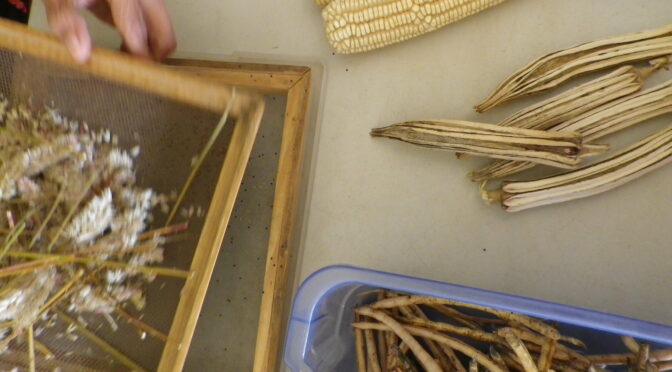This time of year, there’s not much work to do in the garden. We’re mostly looking ahead to next spring, planning garden rotations, new beds, and selecting varieties we’d like to grow next season. One chore that may still need to be taken care of is seed storage. Properly storing seeds will ensure they remain viable for a long time. There are three main things to consider when storing your seeds this winter, whether they’re leftover packets or seeds you saved from your garden.
Keep them cool.
Cooler temperatures help keep seeds in dormancy. The Svalbard Global Seed Storage Vault, which hopes to be the “ultimate insurance policy for the world’s food supply,” stores seeds at about -0.4°F or -18ºC to keep the seeds viable for long periods.
While that isn’t necessary or even possible for most home gardeners, generally, you want to keep your seeds as cool as possible. Storing seeds below 40°F is optimal, but between 50° and 60° will work just fine. Get creative and think about what areas in your home always remain cool, whether it’s your basement or a particular cupboard, closet.
It’s important to remember that freezing and thawing or any significant temperature changes can mimic seasonal changes and cause seeds to deteriorate. Freezers can be a great place to store seeds, but if you frequently lose power during the winter, it may be better to put your seeds in a cool cabinet than into the freezer to avoid significant temperature fluctuations.
Keep them dry.
Moisture also signals seeds to germinate. If you’re saving seeds, make sure they’re fully dry before you package them. Larger seeds should easily snap in half and not bend. Smaller seeds should shatter under pressure.
Use airtight containers such as mason jars to store seeds. It’s also a good idea to avoid storing seeds in the refrigerator or unheated garages and sheds due to the fluctuating moisture and temperature levels.
Another option is to add silica gel packets or some dry rice to your jars or containers. These will help absorb any excess moisture. While this isn’t strictly necessary, it can provide a little extra protection.
Keep them in the dark.
Sunlight is detrimental to the long-term viability of seeds. It can signal to seeds that it’s time to sprout and cause the seeds to break down. You can place jars or containers of seeds in a dark cabinet or a larger solid color tote or container.
A few other things to consider:
- Label everything! Label your containers with the date seeds were stored and when you’ve done germination tests.
- Especially when storing grain seed, if you see signs of pest activity such as moths or weevils, place it in an airtight container in the freezer for two days to kill them.
- Organize your seeds and make a list of what you have to avoid over-ordering this winter.
Properly storing your seeds can save you time and frustration. Follow these tips to ensure your seeds stay viable for as long as possible. Check out a few more of our seed-related posts below:

